To focus your DIY parabolic solar cooker effectively, you'll want to master three key techniques. First, use the mirror alignment method to guarantee each segment reflects sunlight to a single point. Try the two-nail method or laser pointer technique for precision. Next, calibrate the focal point by adjusting a heat-resistant object until you find the hottest spot. Finally, implement adjustable reflector positioning with a swivel base and hinge system to track the sun's movement. These techniques will considerably boost your cooker's efficiency. Exploring these methods in detail will help you create a high-performing solar cooking setup.
Mirror Alignment Method
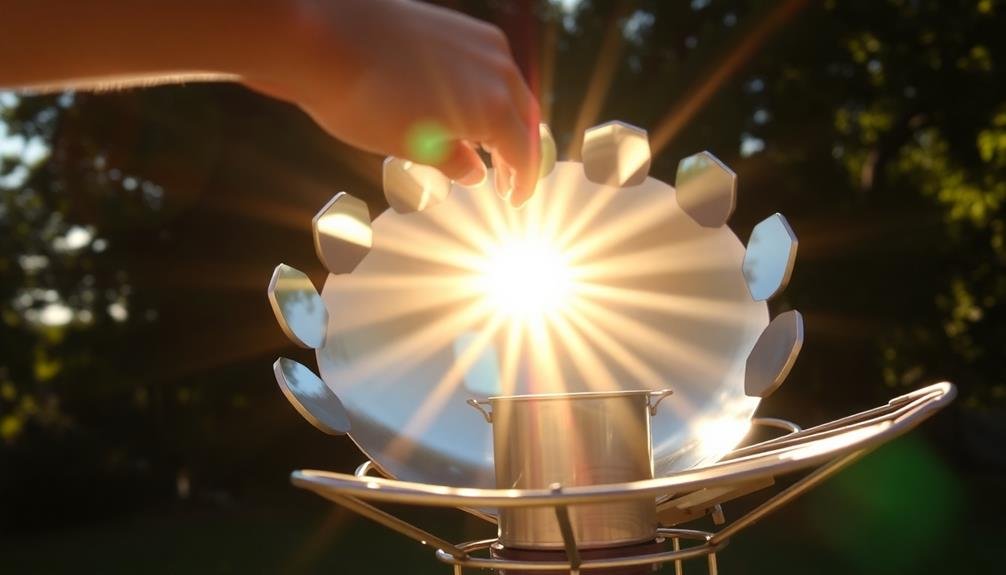
One of the most essential steps in building an effective parabolic solar cooker is proper mirror alignment. To achieve ideal focusing, you'll need to guarantee each mirror segment reflects sunlight to a single focal point. Start by creating a template of your parabolic dish's curve, then use it to position each mirror accurately.
For precise alignment, employ the two-nail method. Attach two nails to a wooden board, spacing them to match your focal point's distance from the dish. Place the board so one nail touches the mirror's surface while the other points at the sun. Adjust the mirror until you see the sun's reflection on the second nail.
Alternatively, use a laser pointer technique. Mount a laser pointer at your intended focal point, aimed at the center of a mirror segment. Adjust the mirror until the laser beam reflects back to its source. Repeat for each segment.
For fine-tuning, observe the light pattern at the focal point. A well-aligned cooker will produce a small, intense spot of light. If you see a scattered pattern, readjust your mirrors until you achieve a concentrated focus.
Focal Point Calibration
After aligning your mirrors, the next step is to calibrate your focal point for ideal cooking performance.
The focal point is where sunlight converges, creating the highest temperature for cooking. To find it, you'll need a small, heat-resistant object like a piece of wood or metal.
Start by positioning your cooker towards the sun. Place your test object at the estimated focal point and observe. If it doesn't heat up quickly, adjust its position slightly. Move it closer to or further from the reflector surface until you find the spot where it heats up fastest.
Once you've found the approximate focal point, fine-tune it. Use a thermometer to measure temperatures at different points around this area.
The spot with the highest temperature is your precise focal point. Mark this location clearly on your cooker.
Adjustable Reflector Positioning
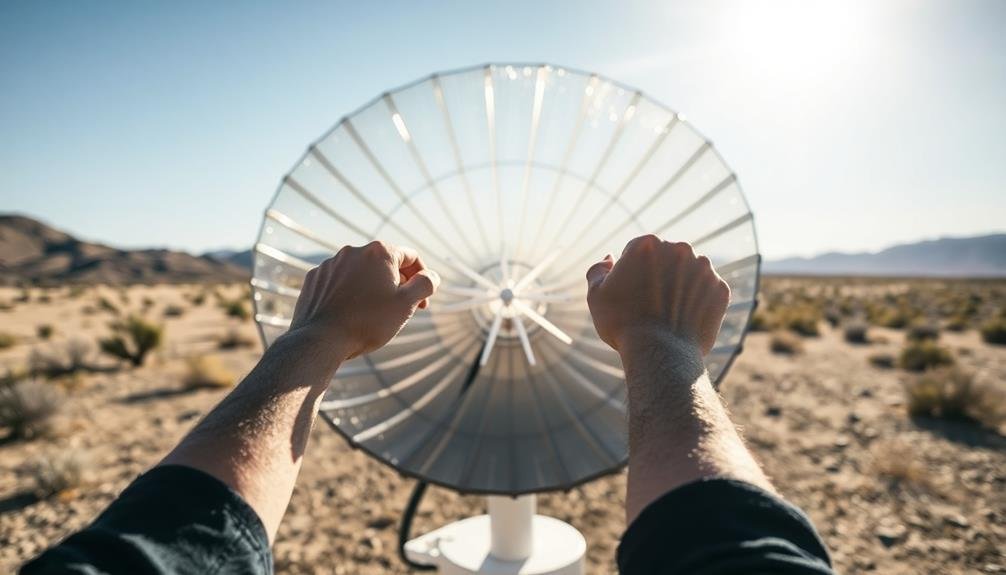
An essential feature of an effective parabolic solar cooker is adjustable reflector positioning. This allows you to maximize solar energy capture throughout the day as the sun's position changes. To implement adjustable positioning, you'll need to create a mechanism that enables easy tilt and rotation of your reflector.
Start by designing a sturdy base with a swivel joint. This will let you rotate the cooker horizontally to track the sun's east-to-west movement. Next, incorporate a hinge system between the base and the reflector. This allows for vertical adjustments to account for the sun's changing elevation.
Consider using a simple lever or screw mechanism to fine-tune the reflector's angle. You can mark degree measurements on your adjustment system for precise positioning. It's vital to guarantee that your adjustment mechanisms are robust enough to withstand wind and maintain their position.
For added convenience, you might want to include a sun-tracking device. This can be as simple as a gnomon (shadow stick) or as advanced as an electronic solar tracker. With these features in place, you'll be able to maintain ideal focus on your cooking pot throughout the day, maximizing your solar cooker's efficiency.
Frequently Asked Questions
What Materials Are Best for Constructing a Parabolic Solar Cooker?
You'll want to use reflective materials like polished aluminum, mylar, or mirrored acrylic for the parabolic dish. For the frame, choose lightweight yet sturdy options such as PVC pipes, aluminum rods, or wooden dowels. Don't forget heat-resistant cookware.
How Does Weather Affect the Efficiency of a Parabolic Solar Cooker?
Weather greatly impacts your parabolic solar cooker's efficiency. You'll get the best results on clear, sunny days. Clouds, rain, and wind reduce performance. Low temperatures also slow cooking times, but don't stop it entirely.
Can Parabolic Solar Cookers Be Used for Purposes Other Than Cooking?
Yes, you can use parabolic solar cookers for more than cooking. They're great for water purification, sterilizing medical equipment, and generating electricity. You'll also find them useful for heating, drying, and even melting metals in small quantities.
What Safety Precautions Should Be Taken When Using a Parabolic Solar Cooker?
When using a parabolic solar cooker, you'll need to protect your eyes and skin from intense sunlight. Always wear sunglasses and sunscreen. Don't look directly at the reflector, and use oven mitts to handle hot cookware.
How Long Does It Typically Take to Cook Meals Using a Parabolic Solar Cooker?
You'll find that cooking times vary with a parabolic solar cooker. On sunny days, you can boil water in 10-15 minutes. Typical meals take 30 minutes to 2 hours, depending on the dish and weather conditions.
In Summary
You've now learned three key techniques to optimize your DIY parabolic solar cooker: mirror alignment, focal point calibration, and adjustable reflector positioning. By mastering these methods, you'll greatly improve your cooker's efficiency and cooking performance. Remember, practice makes perfect. Don't be discouraged if your first attempts aren't flawless. Keep experimenting and refining your approach. With time and patience, you'll be harnessing the sun's power like a pro, cooking delicious meals while reducing your carbon footprint.

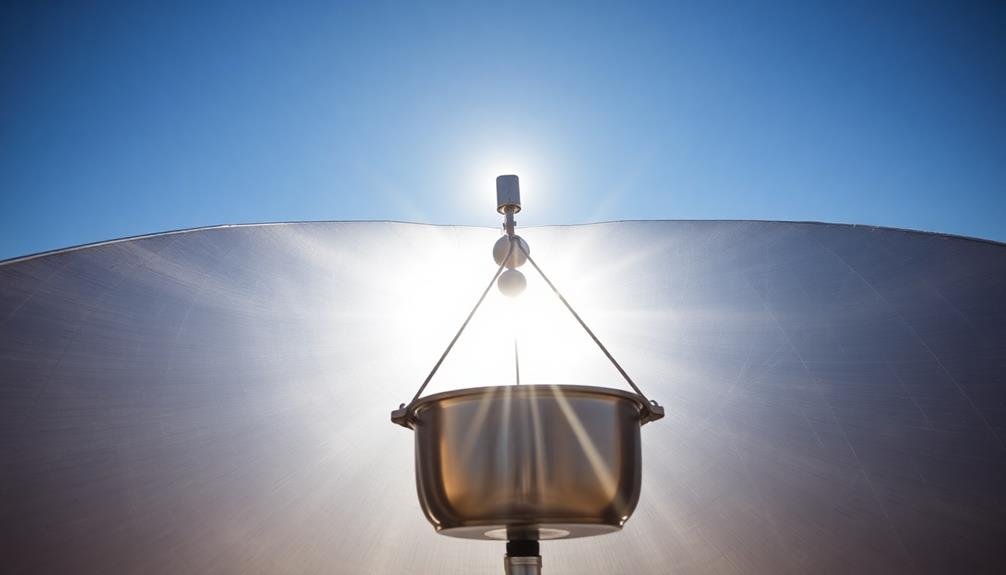
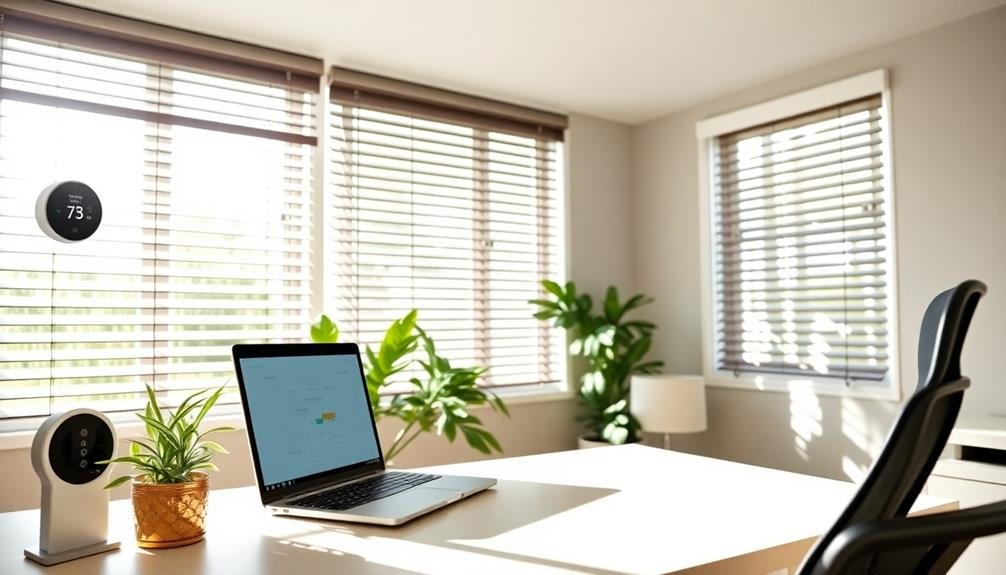
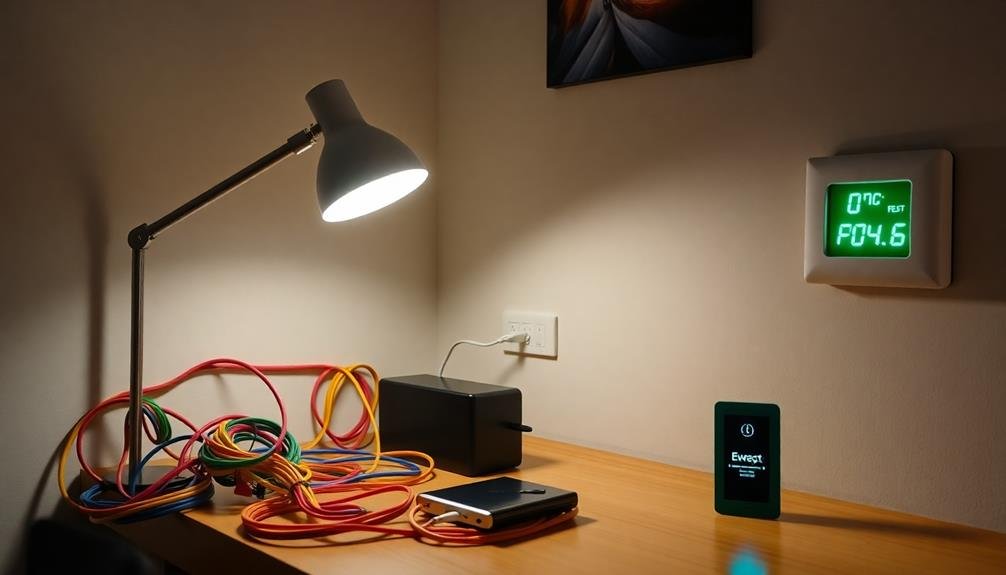
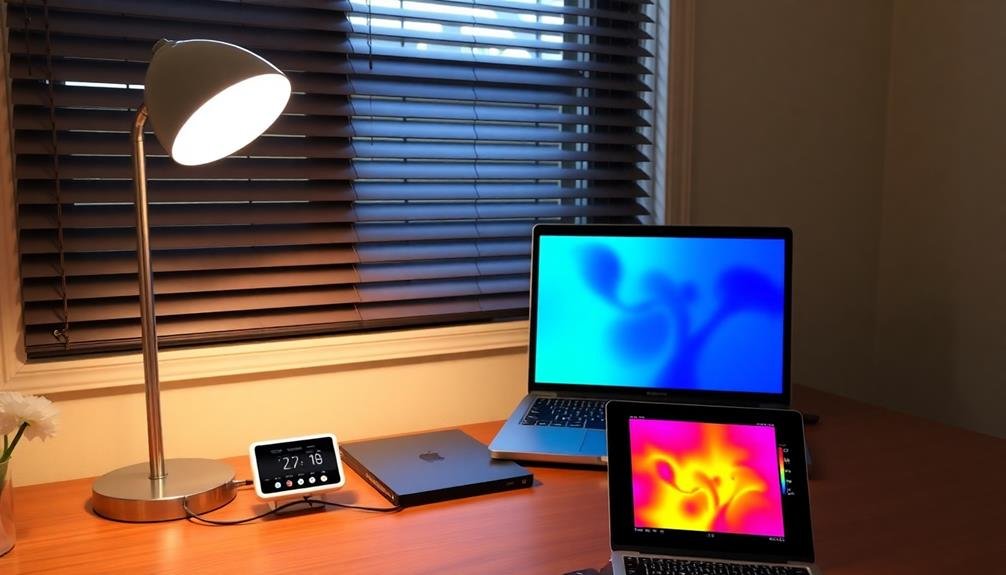
Leave a Reply